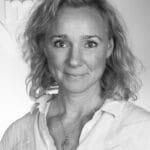Land fire is a rapidly expanding industry in Iceland and it is estimated that in the next five years its production will reach around 100-150 tons. Fish whey is an integral by-product from land farming, and its amount is estimated based on the aforementioned production figures to be around 215-353 th. tons. With such an amount of raw material that can be lost during production, it is important to look for all possible ways to capture it with the best available technology at all times instead of pumping it into the surrounding ecosystem with the associated irreversible environmental effects. In addition, there are great opportunities in turning this "waste" into a valuable and sustainable fertilizer or soil amendment, in the spirit of a circular economy, which could revolutionize Icelandic aquaculture as well as agriculture. Especially when you bear in mind that Iceland imports about 50 thousand tons of synthetic fertilizers every year.
This report provides an overview of the progress and main results of the research and innovation project "Biochar from land burning". The goal of the project was to strengthen the circular economy by analyzing aquaculture sludge collected from land-based salmon farms, developing methods for collecting and dewatering the sludge, and examining the possibility of producing biochar from it.
The report reviews the current state of land farming in Iceland and the challenges related to the disposal of fish sludge, the report also provides an overview of the state of affairs regarding the production of biochar, as well as the laws and regulations that need to be considered regarding the use of fish sludge and biochar for fertilizer and soil improvement. The report also provides information on the progress of the project "biochar from land farming" and highlights the main results of measurements, experiments and development on the farm. In order for aquaculture manure from land farming to become a safe and cost-effective source of fertilizer and soil conditioner in this country, research on the raw material and production processes must be strengthened . This study is only one of two that have been conducted in Iceland on the potential of fish farm sludge for fertilizer and biochar production in Iceland. It clearly indicates that our understanding and knowledge of the scope is still in its infancy. But one of the things that stands in the way of research like this is access to funds that support research like this.
_____
Land-based salmon aquaculture is a new and fast growing industry in Iceland, with projections suggesting its production will reach 100-150 thousand tons/year in the next five years. An integral side-stream of land-based aquaculture is so-called fish sludge, which consists mostly of faeces and uneaten feed. The volume of such fish sludge coming from a 100-150-thousand-ton salmon production is expected to be 215-323 thousand tons. Given the significant volume of this raw material, it is crucial to employ the best available technology to capture it rather than allowing it to enter the surrounding ecosystem, and thereby avoiding associated irreversible environmental impacts. The opportunities in then turning this "waste" into valuable and sustainable fertilizer or soil enhancer, in the spirit of circular economy, is and option that could revolutionize Icelandic aquaculture and agriculture alike. Especially when considering that Iceland imports approximately 50 thousand tonnes of synthetic fertilizer every year.
This report provides an overview of the progress and main results of the research & innovation project "Biochar from land-based aquaculture farming". The aim of the project was to promote the circular economy by analyzing fish sludge collected from land-based salmon aquaculture farms in Iceland, develop means of collecting and dewatering the sludge, and examine the possibility of producing biochar from the sludge.
The report reviews the current status of land-based aquaculture in Iceland and the challenges associated with disposal of fish sludge, it also provides an overview on the state-of-art regarding biochar production, and regulatory constraints for the use of fish sludge and biochar . The report then provides information on the progress within the project and highlights the main results.
For fish sludge from land-based aquaculture to be viable as a potential fertilizer in the future, research on the raw material needs to be intensified. This study represents only one of two conducted in Iceland, indicating that our understanding and definition of fish sludge applications for biochar or as a fertilizer are still in their infancy.

